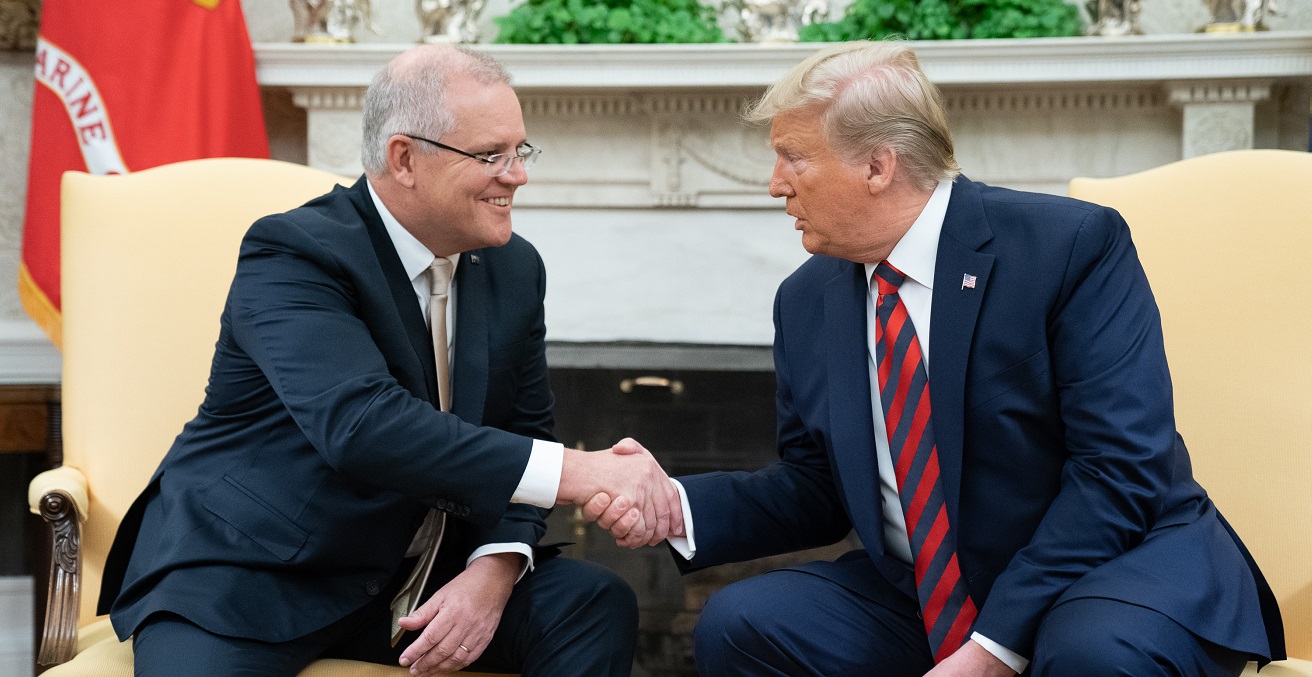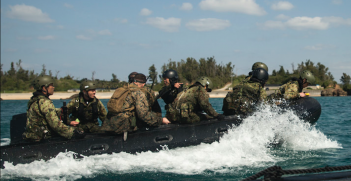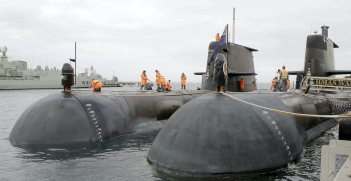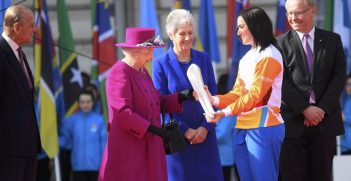“Not like the US”: The Dangerous Power of Australia’s American Obsession

For a ruler, it is safer to be feared than loved. Yet if Australia’s COVID-19 response has taught us anything, it is that when policies can only be sold by scaring the public witless, those policies tend to be badly conceived.
Although Europe’s death toll was shocking, it was the overflowing hospitals and makeshift morgues in the US that rapidly became the “go to” for Australian political classes. The prospect that if Australia’s approach was anything short of full lockdown it would end up in the same situation was pivotal in deflecting criticisms about the extraordinary powers officials were exercising.
However, as the political lies, flawed modelling and real costs of the implemented policies have become apparent, so too has it become clear that – even in a “baseline” minimal response scenario – Australia was never seriously likely to experience the same confronting scenes as the US.
Why are Australians so quick to believe that what happens in the US will also happen in Australia? The germ was sown more than 20 years ago, as the slogan “we don’t want to become like the US” rose to prominence following the mass shooting in Port Arthur, Tasmania.
Australia has never borne more than a passing resemblance to the US. Nevertheless, after the 1996 Port Arthur massacre, the Howard government put forward the absurd proposition that unless drastic action occurred, Australia was on a path to make the violent streets of South-Central Los Angeles look tame. As a slogan, “We don’t want to become like the US” took that country – an anomaly among all other Western nations – and presented it as the most probable outcome for Australia.
Drawing parallels with the US, false though the statistics showed those to be, played on the vulnerability of a public in shock over the senseless murder of innocents. It led to massively over-inflated perceptions about levels of risk and created intense fear about what would happen if government policy was not supported in its entirety.
By trading on fear, decision makers neatly sidestepped the need to pay attention to the crucial demographic, socioeconomic, and other correlates of violence. Considerations like social disadvantage and poverty, disenfranchised minority groups and structural discrimination, and public welfare systems were blithely ignored. This reduced a complex issue down to a very simple binary between a free-for-all bloodbath and a safe society.
Relentlessly insisting that the US was the only yardstick against which to compare Australia conveyed a simple choice between “good” and “bad.” It shut down debate by equating disagreement or questioning of any kind with “wanting” a society where people are brutally murdered.
“We don’t want to become like the US” set the scene for a style of politics that places spin ahead of substance and replaces measured thought with shallow fluff. Just invoke the US in tones of horror, then rely on heavily selective media coverage and ignorance to do the rest. The public ate it up approvingly, and the opinions polls glowed. As both sides of politics realised how effective Australia-US comparisons were for jettisoning rational thought, it was inevitable that this trick would spill over from the niche issue of gun control into other areas of policymaking.
Policymaking 101 tells us to look for examples from elsewhere and consider whether they would translate to local circumstances. It also tells us to be mindful that very small social, economic, and other differences can turn into vast differences in outcomes. Of course, this assumes that decision makers want to implement well informed, carefully considered policies. It sits awkwardly with the more common approach of deciding on the policy and then doing whatever it takes to justify it, so the use of international examples has been distorted accordingly.
When the Australian political class wants to get its own way but is afraid it cannot answer tough questions, single “worst case” scenarios are deliberately sought out. Then, they are presented as outcomes that are virtually inevitable for Australia unless governments are given more power and less interrogation. Yet to fixate on one country that lies at the extreme end of a spectrum, for no reason other than to say we do not want to be like that country, is not a compelling argument or in-depth analysis – it is a self-evident straw man of a platitude.
Sadly, “we don’t want to become like the US” has urged Australians to take a narrow world view and shy away from critical thought. This applies as much to decision makers as to the public more generally, and has supported the rise of cunning but runny-brained “marketing degree” officials who talk in superficial soundbites and favour symbolic glitter over depth. Despite growing public anger and disgust about those same officials, the uncomfortable fact remains that the Australian voters are the ones who have given them licence to bludgeon Australia with nightmarish scenarios that ultimately tear the country apart.
While fear has always been a tool of politics, over the past two decades it has become the first, and often only, tool that Australian decision makers reach for. This practice has long been allowed to evade serious scrutiny, but perhaps people are finally realising that fear is used chiefly to avoid anybody shining a light on weak policies and base politicking.
Seen for what it truly is, “we don’t want to become like the US” serves not as a sound reason for policy decisions but as a tell-tale warning that all is not as it seems.
Dr Samara McPhedran’s career has spanned the public and private sectors as well as academia. Currently, she is enjoying her intellectual freedom as a social commentator at large.
This article is published under a Creative Commons License and can be republished with attribution.





